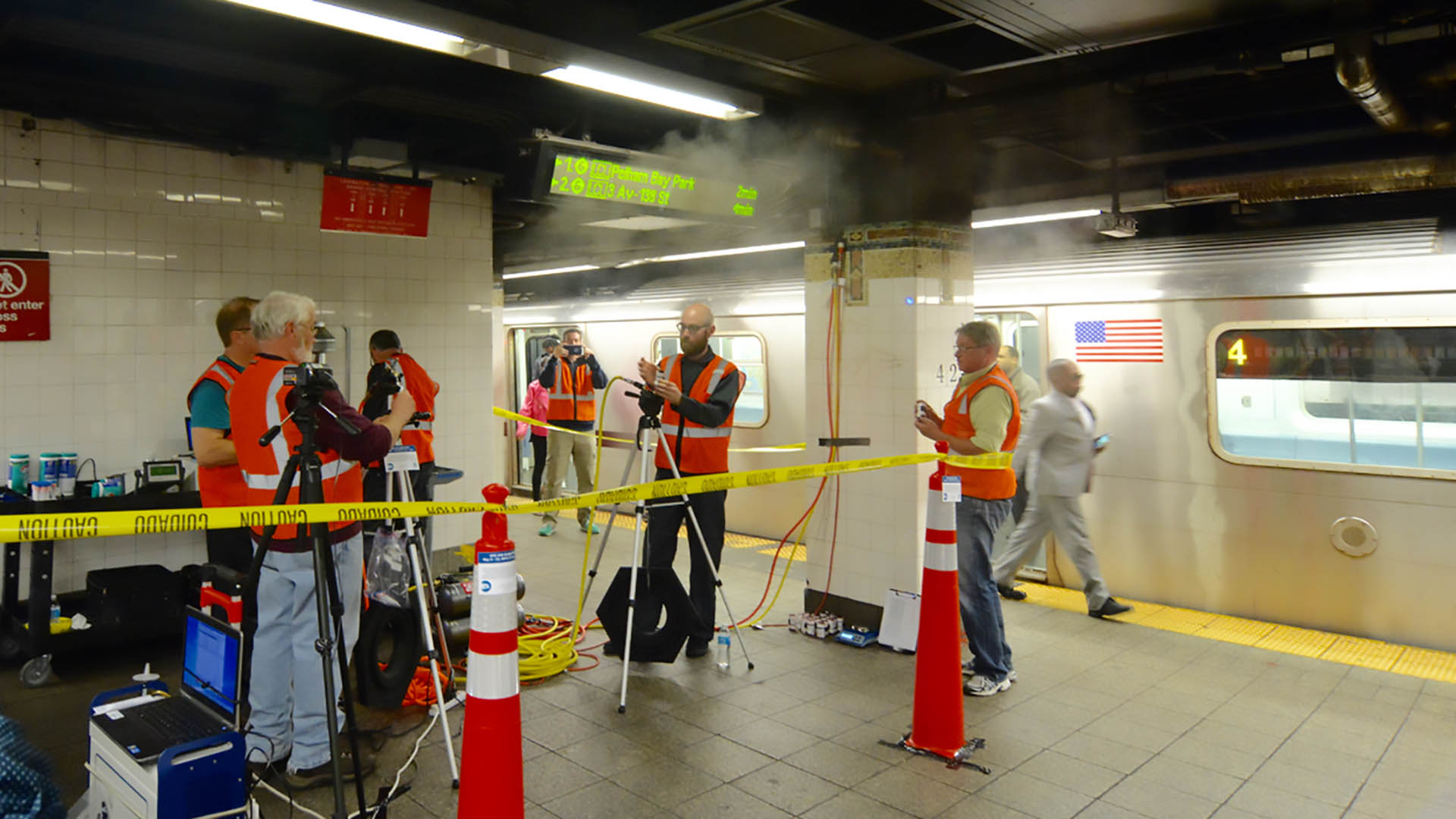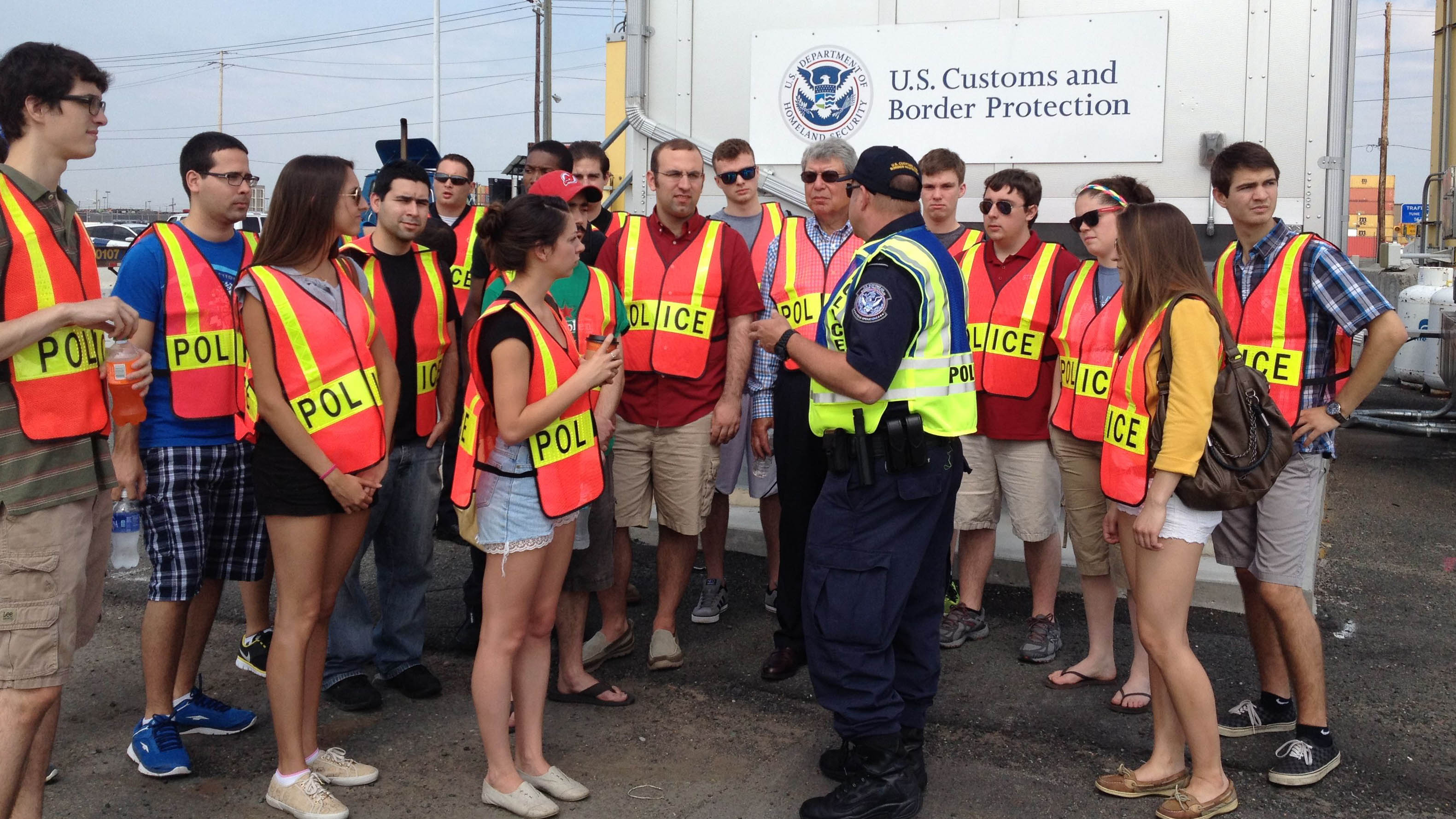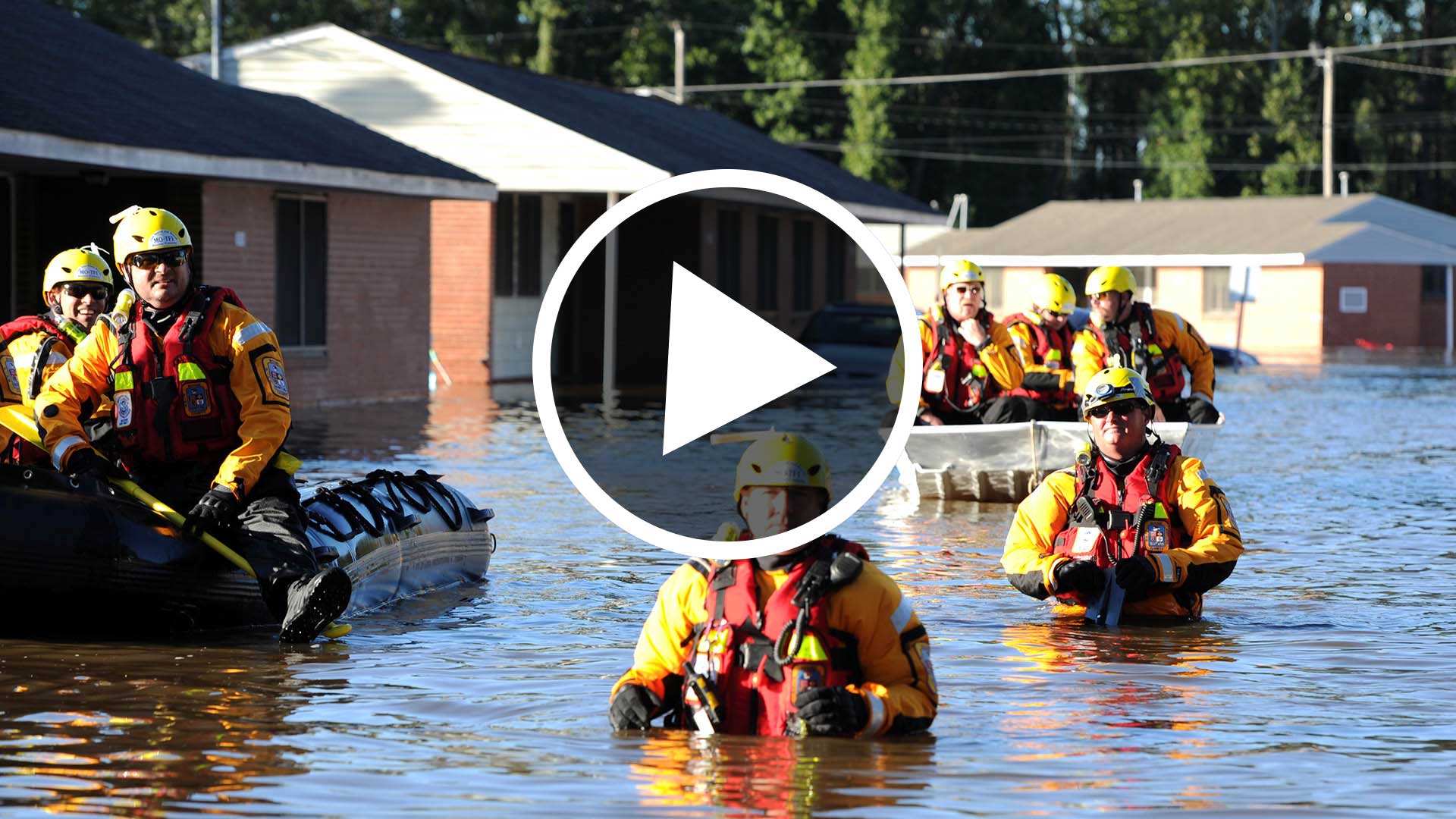S&T conducts research to find answers to homeland security challenges.
We conducted a weeklong airflow study in the New York City subway system to understand the behavior of airborne contaminants. Officials oversaw controlled releases at Grand Central, Times Square, and Penn Station subway platforms. This is the largest airflow study of its kind to date, which involved collecting 7,000 surface and 3,000 air samples. Knowing how smoke, chemicals or fuels move through a subway system helps researchers develop practical solutions responders can use in an airflow-related incident. It also can inform new possibilities for chemical and biological contaminant detection systems.
S&T also opened a new Center of Excellence (COE) in 2016, the Critical Infrastructure Resilience Institute (CIRI). CIRI is one of S&T’s 11 COEs, and received a five-year, up to $20 million grant to facilitate private-public partnerships that will help protect critical infrastructure systems. The new COE will explore important topics, such as how software and hardware security vulnerabilities could be exploited to mount cyberattacks, how to best measure infrastructure cyber risks, how to design affordable cyber-insurance, and how individual systems, such as ports, could be assessed to support risk reduction measures.





